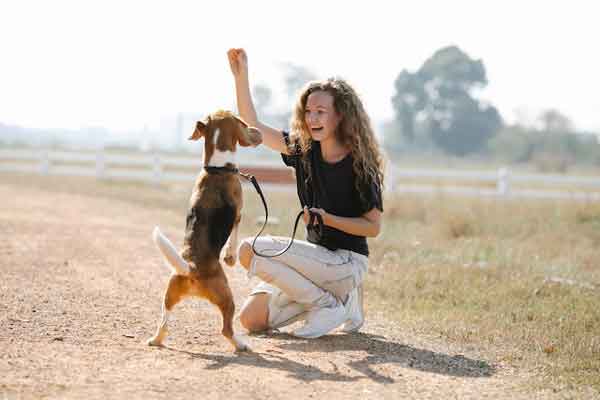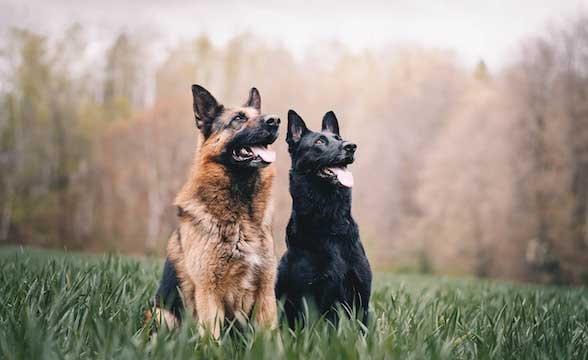Dogs, often considered man’s best friend, communicate through a complex language of their own. This unique connection between humans and dogs goes way back, around 15,000 years ago. The bond is special because, just like us, dogs are social creatures.
These buddies have become more than just friends; they play various roles in our lives – protectors, helpers, and even lifesavers.
Building a meaningful relationship requires an understanding of the complexities of dog behavior. The way we interpret and respond to their behavior can significantly influence the dynamics of our relationship.
This article delves into six fascinating aspects of dog behavior, shedding light on the importance of comprehending their actions and reactions.
1. The Influence of Dog Breed on Behavior
Have you ever wondered why dogs act so differently from one another? Well, it turns out that their behaviors are kind of like a secret reality, and their breed is a critical truth. Dogs come in several breeds, each with unique characteristics that influence their actions.
Understanding these breed-specific characteristics allows dog owners to tailor their approach to meet their furry companions’ needs better. Let’s take Doodle dogs, like the Goldendoodle and Sheepadoodle, as examples. These furry friends are a mix of two fantastic breeds, and just like baking a cake, the mix matters.
So, next time you marvel at your dog’s unique personality, remember it’s a blend of their incredible breed mix. Get to know the special blend, and you’ll have a friend with a happy tail like none other!
2. Understanding Communication Signs
Communication is the key to our friendship with dogs, and our furry pals have their special way of expressing emotions. Figuring out what dogs are saying is super essential for us as pet owners.
Dogs have secret codes for joy, fear, or when they’re not feeling well, want to hang out or play. Paying attention to these cues, like barks or growls, helps us know what’s on our dog’s mind. After ample time, when we tune in and respond to these signals, it helps build a stronger connection and makes chatting with our four-legged friends even more fun.
For instance, a wagging tail doesn’t always mean a dog is just excited; it could signal frustration or other emotions. To understand what a dog is feeling, pay attention to the wag’s speed, direction, and position. The direction matters too – research suggests dogs often wag their tails more to the right when they feel positive, like when they’re interacting with their owner.

3. Behavioral Challenges and Solutions
Addressing common behavioral issues in dogs requires a thoughtful approach. Before punishing your buddy, identify the root causes of problems, such as anxiety, fear, or lack of stimulation.
For instance, dogs sometimes bark because they’re bored or due to a lack of mental stimulation. You can help by giving them toys that make them think or planning activities that need problem-solving. Teach them some quick and enjoyable tricks, and when they do well, give them treats.
Ideal care, positive support, and training techniques offer practical solutions for behavior modification. You can appreciate them with treats or rewards for desired behaviors. Consistency and patience are also essential in addressing behavioral challenges, as dogs respond best to a stable and predictable environment.
4. The Link Between Health and Behavior
Like humans, physical health plays a crucial role in shaping a dog’s behavior. Taking care of a dog’s mental health is super important. It highlights the need to look after every aspect of a dog’s well-being.
Create a blend of nutrition, exercise, and routine veterinary care to boost their mental and physical strength. A well-balanced diet, regular exercise, and preventive healthcare contribute to a dog’s overall well-being, positively influencing their behavior.
5. Know Your Pup’s Cognitive Abilities
Here’s the interesting fact: not all dogs think the same way. Dogs aren’t just cute; they’re smart too. Each dog has its unique way of thinking, with some breeds being natural problem solvers. It would help if you navigate your pet’s specific strengths and weaknesses in how different breeds use their brains.
Imagine your dog’s mind as a puzzle; each breed has its own way of putting the pieces together. This knowledge isn’t just fascinating; it’s practical. Recognizing the activities that match your dog’s cognitive style helps you find what makes them happier and healthier.
6. Social Structure and Pack Mentality
Exploring the concept of a dog’s pack mentality reveals the deep-rooted social structures within canine communities.
Dogs, by nature, are pack animals with an innate sense of hierarchy. Understanding the dynamics of this hierarchy is vital for effective training and interaction. Recognizing the role of pack dynamics can improve leadership and balance the relationship between humans and dogs.

Final Verdict
To be great pals with your dog, learn about their behavior, breed, and surroundings. Be positive, consistent, and patient if your dog faces behavior challenges. Understanding your dog better helps build a happy and trusting bond filled with love.

